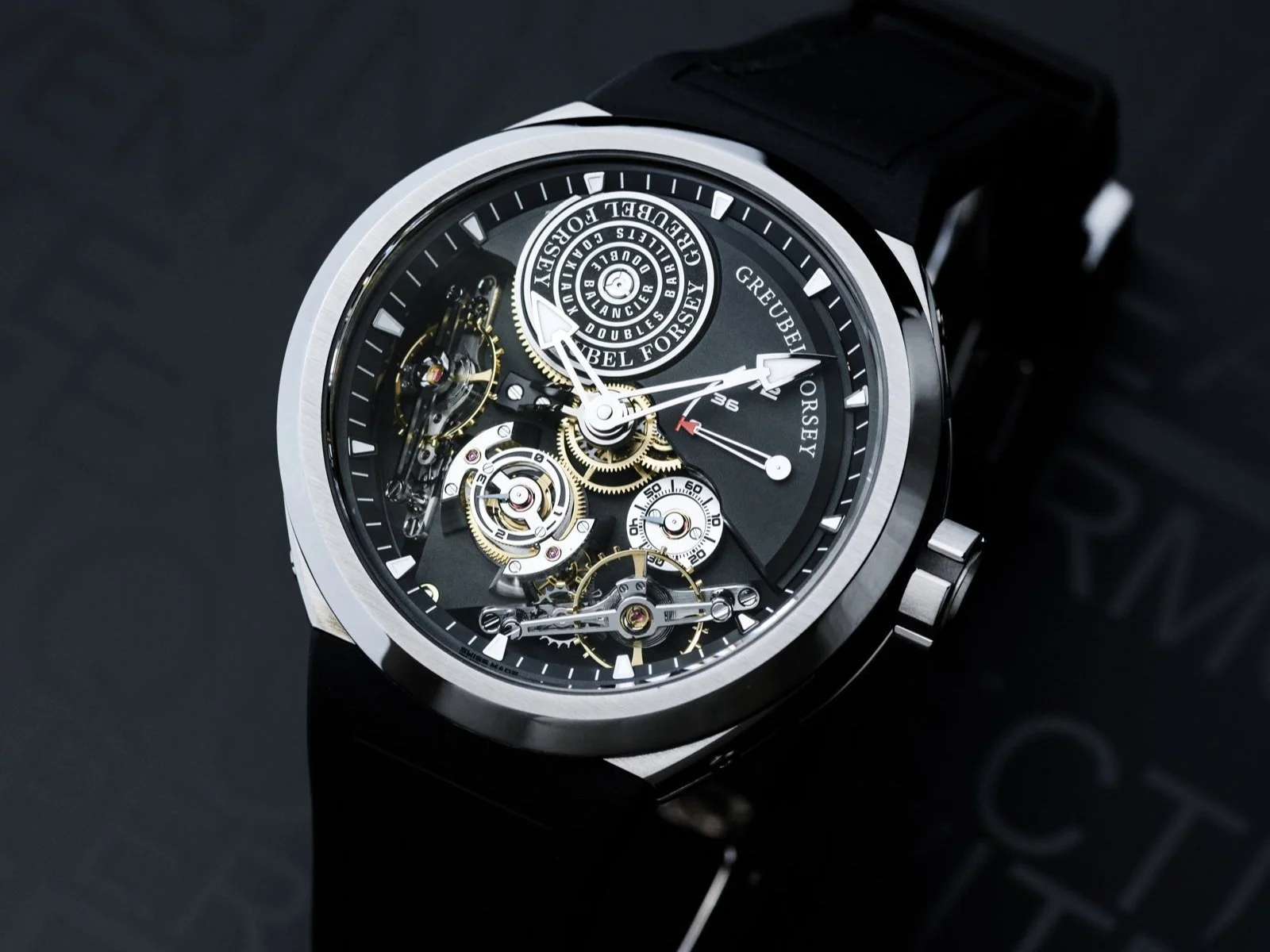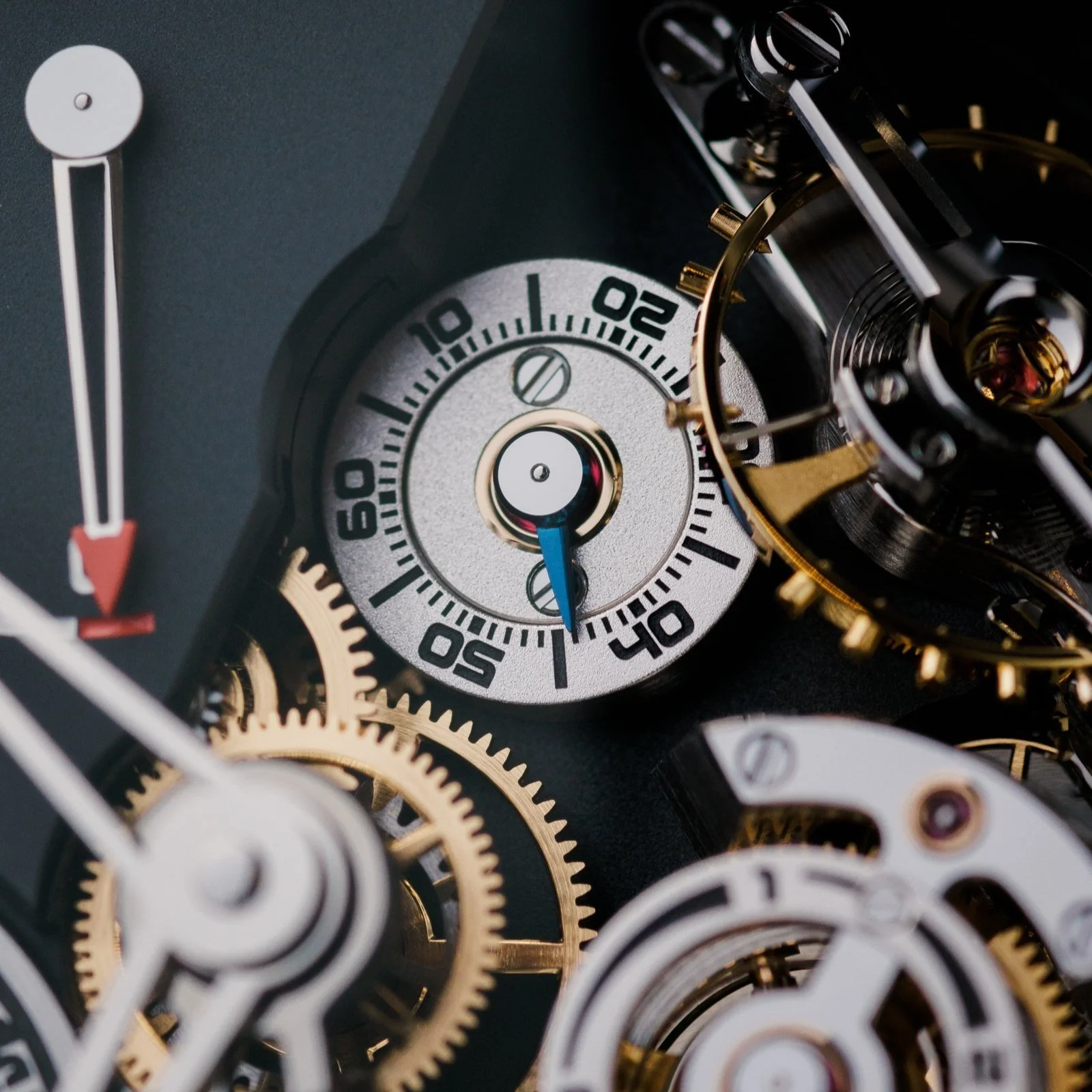Fantastic calibers and where to find them: Greubel Forsey's Double Balancier à Différentiel Constant
Since the launch of their first timepiece 20 years ago, the Double Tourbillon 30°, Greubel Forsey has been behind some of the most technically-forward creations in modern independent watchmaking. Based in La-Chaux-de-Fonds, Robert Gruebel and Stephen Forsey, the master watchmakers behind the brand, are renowned for their inclined tourbillons, three-dimensional architecture in movements, and ultra-fine finishing. While the tourbillon remains the backbone of the brand, Greubel Forsey’s foray into non-tourbillon watches has attracted much love from collectors and enthusiasts. The Hand Made 1, Balancier S (sport edition), and the Double Balancier Convexe are all worthy of holy grail status.
Today, we’re diving deep into one of our favorite Greubel Forsey movements – the Double Balancier à Différentiel Constant. While “time-only” watches are often associated with simplicity, the technical sophistication and architecture of the Double Balancier movement creates a highly complex “three-hander.”
Double Balancier à Différentiel Constant, the movement
In 2013, Greubel Forsey introduced the brand’s first timepiece without a tourbillon. The Double Balancier 35° featured two balance wheels, inclined at 35°, and placed at nine and five o’clock on the semi-openworked dial. The incline of the balance wheels ensures that neither exists on the same plane, meaning that neither balance wheel is likely to be subject to lengthy vertical or horizontal positions on the wrist. Here, we observe similar principles at play with the brand’s core inventions – inclined tourbillons. With the addition of a differential, the Double Balancier averages the two balance wheels to create chronometric performance, better than that of a single, horizontally or vertically mounted balance wheel.
The original Double Balancier 35° from 2013.
Three years after its arrival, the Double Balancier à Différentiel Constant received a major design and aesthetic upgrade. No longer is the differential and all of the gearing that link the balance wheels obscured by the hour track on the dial. Out in the open, collectors can observe the complexity of high-end chronometry without even turning the timepiece over. It’s not only the averaging of both balance wheels that ensures heightened chronometric performance. It’s also the constant force mechanism. Smack between the balance wheels, where the differential lies, two tiny springs are mounted onto the gears that store four minutes worth of energy. Designed to offset the slow, increasingly uneven distribution of power from the mainspring (especially as it reaches the end of its 72-hour life), the constant force releases the same amount of energy to keep both balance wheels beating at the same amplitude from start to finish.
With Greubel Forsey, we expect nothing less than the limits of technical mastery in watchmaking. While they have achieved immense popularity amongst indie collectors, these creations remain “watchmaker’s watches” – designs and complications that appeal directly to those with intimate familiarity with watchmaking mechanics. This timepiece’s 200+ ultra-fine finished and designed components bring together one of the most exciting double balance wheel timepieces in the history of watchmaking (there haven’t been many, more on that below).
Latest, Double Balancier Convexe from Greubel Forsey’s collection.
What makes this movement so special?
Above and beyond all of the technical specificities, the Double Balancier à Différentiel Constant finds its place in the pantheon of modern movements for a few reasons:
1. Rarefied air in non-tourbillon watchmaking
There’s an unwritten rule (or so it seems) – all of the greats in watchmaking must create a timepiece with two balance wheels and differential. Abraham-Louis Breguet created three-separate double-balance timepieces (all pocket watches), kickstarting the tradition that places such timepieces in a rarefied air. Only a handful of indies have ever stepped into this territory and brought it to the next level with a differential – Dufour’s legendary Duality and MB&F’s LM2. From a technical point of view, these timepieces may not have the same perceived complexity as a tourbillon but certainly are no less challenging to create.
2. New age, new categories
One thing about modern independent watchmaking, we’ve smashed how traditional categories work. Simple and high-end? Ultra-technical and time-only? These are combos that historical watchmakers would struggle to imagine. Yet, both are present in some of the most coveted timepieces today. While Dufour’s Simplicity (2000) and F.P. Journe’s Chronomètre à Résonance (2000) were extremely early arrivals in this trend, the Double Balancier à Différentiel Constant is a timepiece that not only accelerated the shift toward ultra-fine finished, ultra-technical three-hand watches, but also solidified that category of timepiece in modern watchmaking.
In independent watchmaking, there are so few examples of a double balance wheel timepiece with more appealing design and higher level finishing. The Double Balancier à Différentiel Constant is a pinnacle timepiece inside the modern category of ultra-technical, ultra-fine finished time-only watches.




